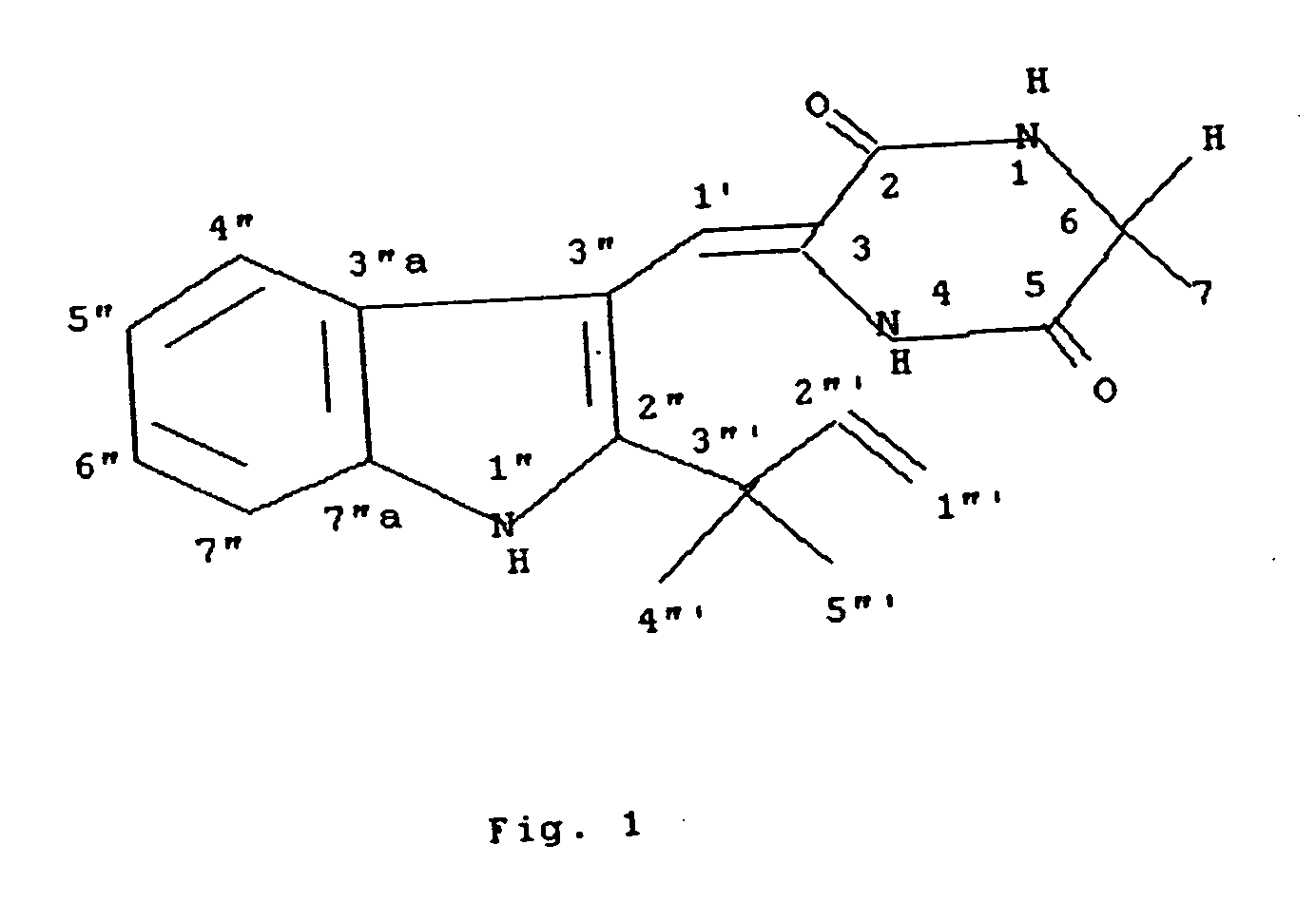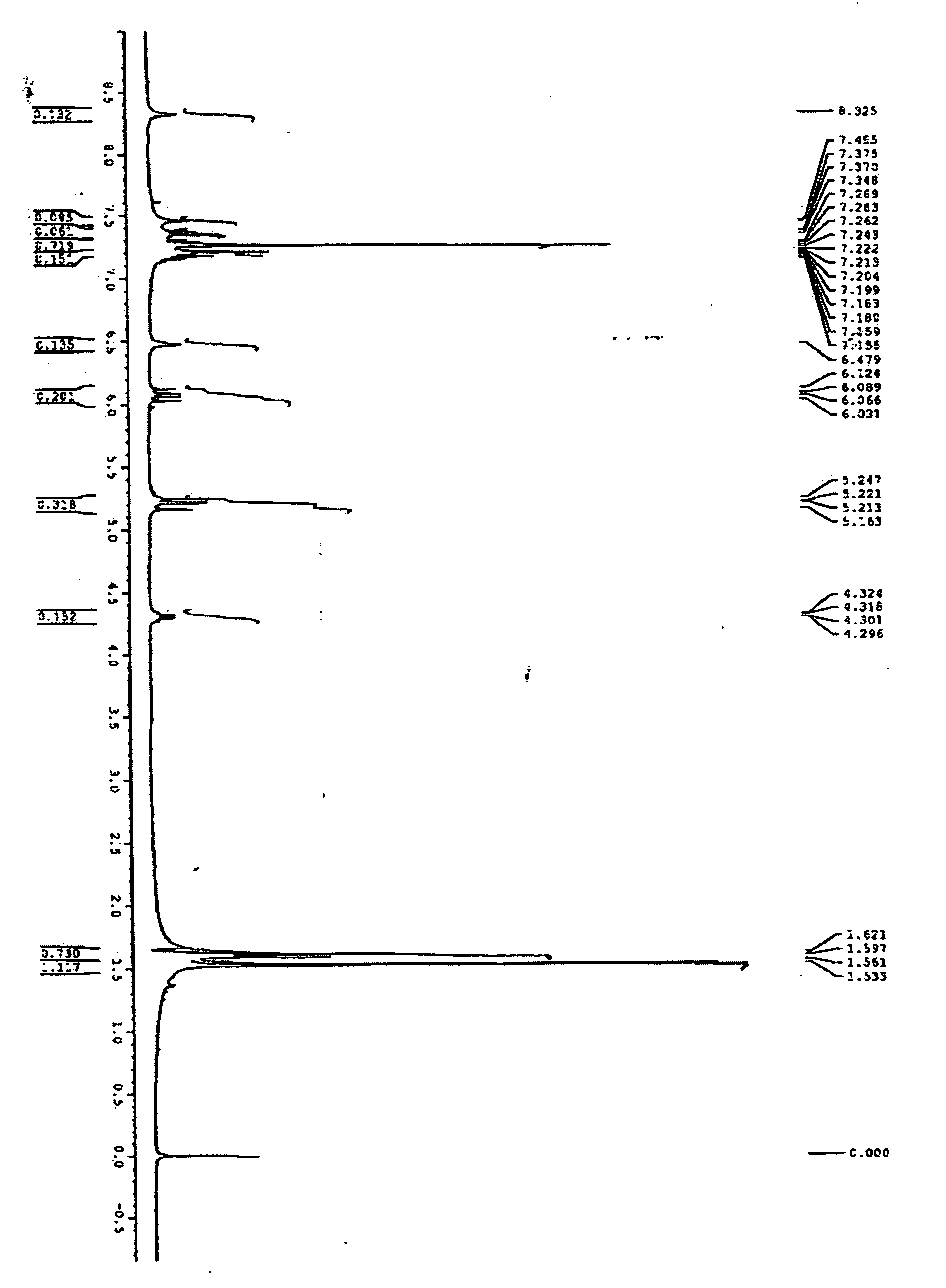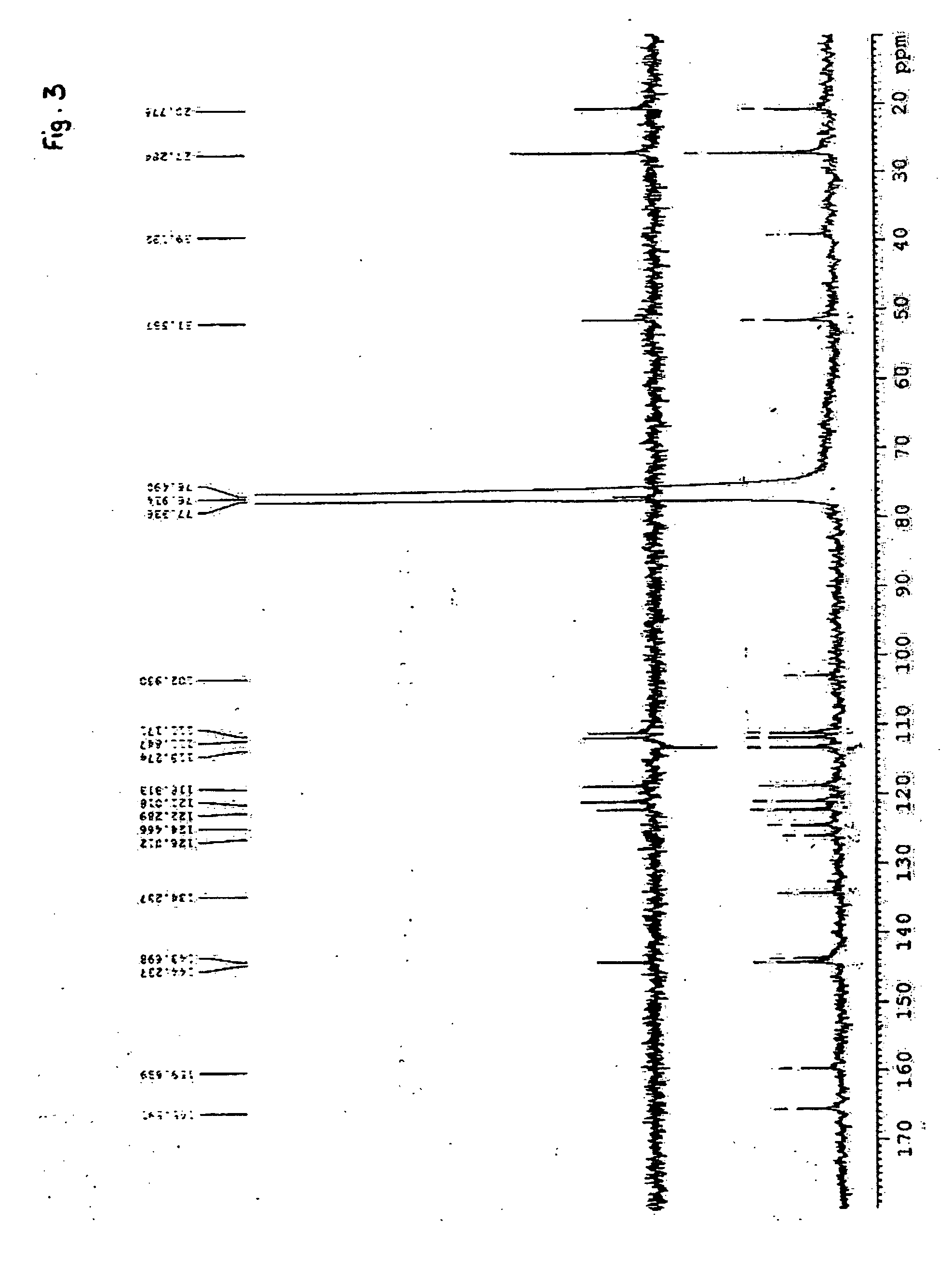Chrysogenazine obtained from fungus Penicillium chrysogenum having antibacterial activity
a technology of chrysogenazine and penicillium chrysogenum, which is applied in the direction of antibacterial agents, organic chemistry, organic active ingredients, etc., can solve the problems of limited use of these agents, tooth discoloration when administered in children, and limited effectiveness of these agents
- Summary
- Abstract
- Description
- Claims
- Application Information
AI Technical Summary
Benefits of technology
Problems solved by technology
Method used
Image
Examples
example 1
[0032] The mangrove plant Porteresia coarctata (Roxb.) was collected from Chorao Island along the Mandovi estuary of Goa. Leaves of the mangrove plant was collected and transported to the laboratory in sterile polythene bags. In the laboratory the leaves were rinsed with sterile seawater to remove adhered particles and detritus material. The leaves were next kept in a moist chamber, using known standard techniques, for 2 weeks, to allow the fungi to grow and sporulate. Repeated subculturing resulted in pure fungal isolate.
example 2
[0033] The growth conditions of the fungal isolate was optimised and grown on potato dextrose agar (PDA) slants (HiMedia Industries Ltd.) and later grown in small Erlenmeyer flasks (100 ml) in potato dextrose broth prepared in seawater: distilled (1:1) under shaker conditions. The culture obtained at the end of 4-5 days was used to seed 5 lit. Erlenmeyer flasks containing 1 lit of the same medium prepared similarly in replicates of four at room temperature (28-30° C.). The flasks were kept stationary for 15 days. At the end of 15 days fungal mycelia were removed by filtration and fermentation broth was extracted with chloroform.
example 3
[0034] The chloroform extract (30 mg), after removal of the solvent in vacuum, was fractionated through a column of silica gel using petroleum ether:ethyl acetate mixture. Initially, 200 ml of ethyl acetate: petroleum ether in the ratio (1:99%) was used. This was followed by elution with 200ml of a mixture of ethyl acetate: petroleum ether (2:98%). The next percentage of ethyl acetate used was 5% and petroleum ether was 95%. Subsequently, ethyl acetate percentage was increased by 5%. The sub-fractions obtained were spotted on silica gel TLC plates, combined and concentrated after developing and spraying with cerric sulphate.
PUM
| Property | Measurement | Unit |
|---|---|---|
| diameter | aaaaa | aaaaa |
| silica gel chromatography | aaaaa | aaaaa |
| pore size | aaaaa | aaaaa |
Abstract
Description
Claims
Application Information
 Login to View More
Login to View More - R&D
- Intellectual Property
- Life Sciences
- Materials
- Tech Scout
- Unparalleled Data Quality
- Higher Quality Content
- 60% Fewer Hallucinations
Browse by: Latest US Patents, China's latest patents, Technical Efficacy Thesaurus, Application Domain, Technology Topic, Popular Technical Reports.
© 2025 PatSnap. All rights reserved.Legal|Privacy policy|Modern Slavery Act Transparency Statement|Sitemap|About US| Contact US: help@patsnap.com



